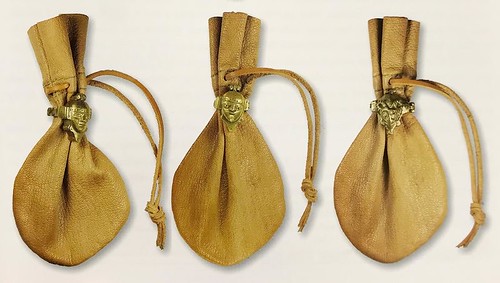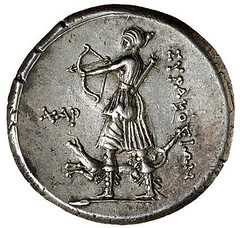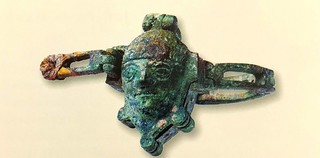
PREV ARTICLE
NEXT ARTICLE
FULL ISSUE
PREV FULL ISSUE
CLOTHING ON ANCIENT COINSA January 16, 2018 CoinWeek article by Mike Markowitz is headlined, "Does This Toga Make Me Look Fat? Clothing on Ancient Coins". It's an excellent survey of
the various types and styles of clothing commonly seen on ancient coins. Here's a short excerpt - be sure to read the complete article online for much more. -Editor
Clothes carried a range of social and cultural meanings that are expressed by the garments we see on ancient coins. Coin auction catalogues and reference books describe these garments with a Greek and Latin vocabulary that can be baffling for beginners. Only a handful of actual garments survive from classical antiquity (mostly from Roman Egypt), so to understand ancient dress we rely on evidence from art history and literature. Coins cannot tell us the colors or patterns of ancient textiles; for that we rely on wall paintings, mosaics and ceramics. But the best ancient coin engravers did have a good eye for drapery.
To read the complete article, see: On a related topic, here's a January 12, 2018 Atlas Obscura piece about an obscure article that many Romans would have been quite familiar with - puzzle locks for
their coin pouches. -Editor
Slocum eventually identified 156 examples in museums and collections around the world, while developing his book on the subject. An impressive variety of padlocks have survived from the ancient Roman world, but this type of puzzle lock has a few distinctive features. Each about the size of a large ring, the locks were usually made of bronze and featured a faceplate sculpted into the image of a god. Janus, god of transitions and passages, was a popular subject. With few exceptions, the faceplate was hinged at the top, and flipped up to reveal a keyhole, the key to which was also sometimes crafted into a ring, worn separately. But the key alone was not enough to open one. The locks also hid one or two tiny little plates or switches that needed to be moved before the shackle—the hoop of the ring—would open. They were more akin to puzzle boxes than modern Master Locks.  Replica puzzle-locked coin pouches To read the complete article, see:  Wayne Homren, Editor The Numismatic Bibliomania Society is a non-profit organization promoting numismatic literature. See our web site at coinbooks.org. To submit items for publication in The E-Sylum, write to the Editor at this address: whomren@gmail.com To subscribe go to: https://my.binhost.com/lists/listinfo/esylum All Rights Reserved. NBS Home Page Contact the NBS webmaster 
|

